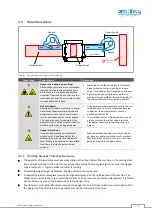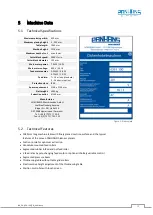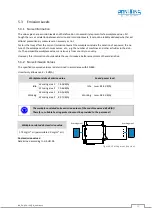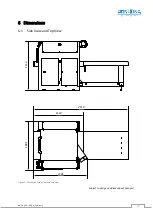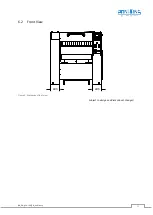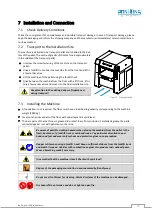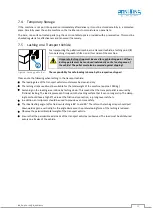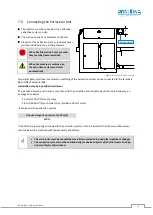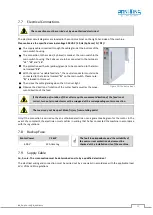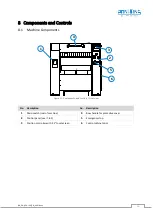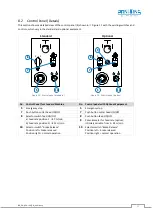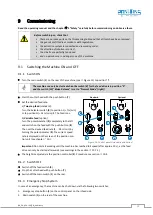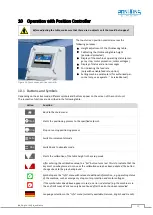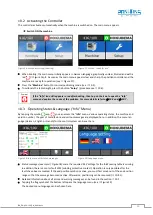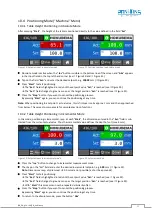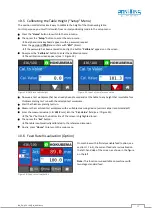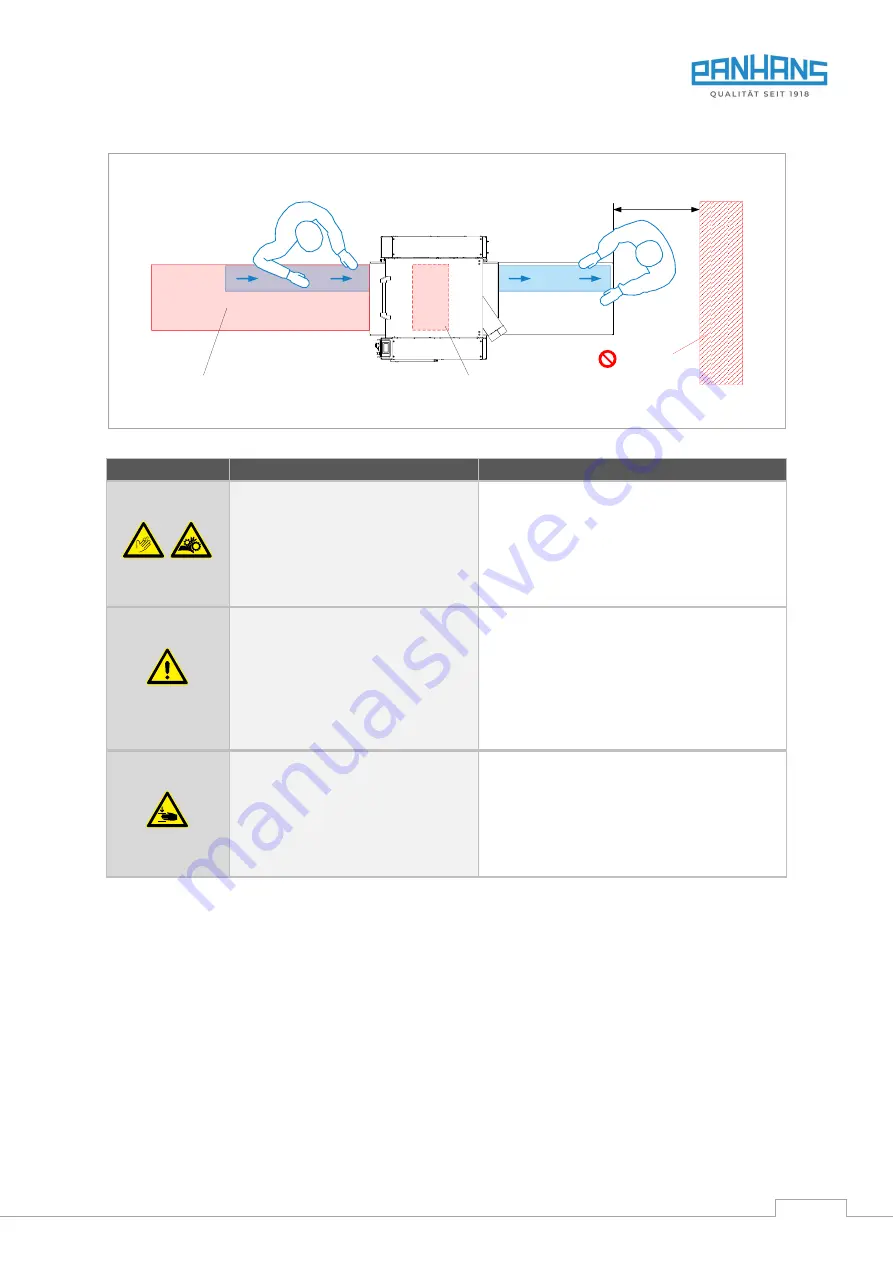
BA_PH_436-100_EN_44-21.docx
17
4.4
Hazardous Areas
Figure 2: Danger zones during thickness planing
Danger Zone
Type of hazard
Prevention
1
Danger of drawing in and cutting!
Although the cutter head is not accessible
from the outside, it is theoretically possi-
ble to reach into the infeed and outfeed
opening of the machine and thus into the
rotating cutter head. There is a high risk of
injury and even death here!
1.
Never reach into the opening of the thickness
planer while the cutter is running or the ma-
chine is switched on (see Danger Zone 1 above).
2.
Before carrying out maintenance work or re-
moving pieces of material, be sure to switch off
the main switch and secure it with a padlock.
2
Risk of kickback!
Despite anti-kickback protection, in excep-
tional cases the workpiece can kick back
dangerously and cause the most serious
injuries and endanger the lives of people.
This can be the case, for example, if the
workpiece tilts in such a way that the anti-
kickback system can no longer engage.
1.
The operator must always stand next to the ma-
chine and never in front of the infeed opening.
In addition, the workpiece must never be
pushed with the body.
2.
It is forbidden to stay in Danger Zone 2 (see fig-
ure above) when the cutter head is running.
This applies equally to the operator and to a
helper.
3
Danger of crushing!
The processed workpiece is constantly
pushed out of the outfeed side of the
thickness planer by means of automatic
feed. If there is an obstacle on the outfeed
side, there is a risk of a person being
crushed.
Keep the outfeed side clear at all times and do
not place any obstacles, such as walls, material
handling trolleys, forklift trucks, etc. in the Dan-
ger Zone 3 shown in the figure above.
4.4.1
Working Areas & Protective Measures
•
The operator of the machine must generally stand on the infeed side of the machine, in the cutting direc-
tion and with his body to the side of the machine table during thickness planing. Do not enter the danger
zone 2 marked in
Figure 2 while the cutter is running.
•
To avoid tipping of longer workpieces, a table extension should be used.
•
A required helper for workpiece removal must generally stand on the outfeed side of the machine. The
helper does not intervene in the machining process, but only removes the finished workpieces. It is forbid-
den for helpers to stay on the infeed side or in the danger zone.
•
Any observers must generally remain outside the danger zones. A sufficient distance is prescribed so that
the operator of the machine and any assistant cannot be hindered in their work.
Operator
Table Extension
Danger Zone 2
Danger Zone 3
Obstacle
(e.g. wall.)
Danger Zone 1
Helper















